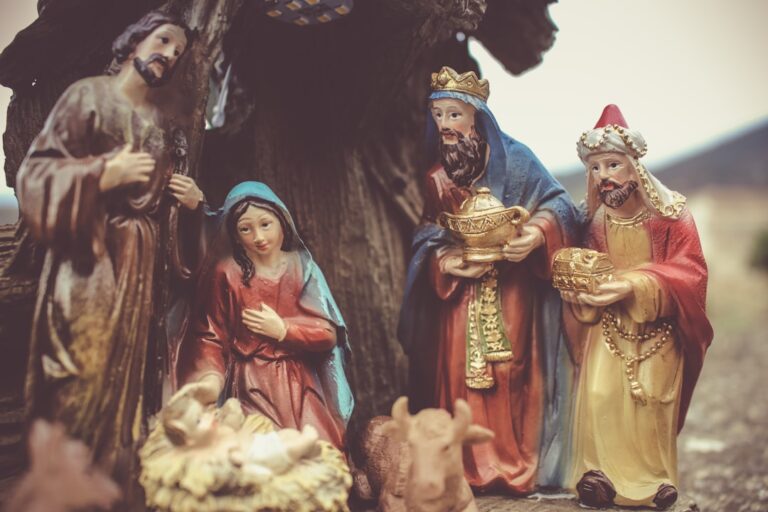The Enchanting Christmas Traditions: An In-Depth Look at Holiday Practices Christmas is a season of happiness, festivity, and treasured customs. It’s fascinating to learn about the lengthy history of some of the most cherished traditions as you get ready to celebrate this joyous time. Every element of this holiday, from the history of the Christmas tree to the development of the customs surrounding Christmas dinner, has a tale worth sharing. Together, we can explore the intriguing beginnings & changes of these beloved Christmas customs as we travel through time. With origins dating back centuries, the Christmas tree is a representation of holiday joy. Its roots are in ancient pagan customs, when the winter solstice was celebrated with evergreen trees. If you need weekly trivia questions and handouts we’ve got you covered! Trivia Host?
Key Takeaways
- The Christmas tree tradition originated in Germany in the 16th century and was brought to England by Queen Victoria’s husband, Prince Albert, in the 19th century.
- Santa Claus has evolved from the historical figure of Saint Nicholas, a 4th-century Greek bishop known for his generosity and gift-giving.
- Christmas traditions have evolved over time, incorporating elements from various cultures and religions, such as the Yule log from Scandinavia and the Nativity scene from Italy.
- Christmas carols have surprising origins, with some dating back to ancient pagan rituals and others originating from medieval European church music.
- The tradition of hanging stockings by the fireplace on Christmas Eve is said to have originated from the story of Saint Nicholas leaving gold coins in the stockings of three poor sisters.
Evergreens, according to the Celts and Romans, had magical qualities and symbolized life and rebirth in the deadliest winter days. Christmas was adapted from these traditions as Christianity expanded throughout Europe. In Germany, the modern Christmas tree started to take shape by the sixteenth century. Families would decorate their evergreen trees with nuts, fruits, & candles after bringing them inside.
During the 19th century, this practice eventually made its way to America after quickly gaining traction in other regions of Europe. Although the United States saw its first Christmas tree in 1747, the custom didn’t really take off until the middle of the 1800s, thanks in part to Queen Victoria and Prince Albert, who made it popular in England. A symbol of Christmas, Santa Claus has a rich & diverse past. The origin of the contemporary Santa image can be found in St.
Bishop Nicholas of the fourth century was renowned for his kindness & generosity. Born in modern-day Turkey, St. Nicholas gained notoriety for his charitable deeds, which included surreptitiously giving poor girls dowries. His charitable legacy paved the way for the cheerful person we know today. Different cultures helped shape Santa Claus over time. On December 5th, Sinterklaas was celebrated in the Netherlands, where kids would leave out hay-filled shoes for his horse in the hopes of winning presents.
During the 18th century, Dutch settlers brought this custom to America. By the 1800s, Santa had evolved into a plump, jovial man wearing a red suit thanks to the work of authors like Clement Clarke Moore and illustrators like Thomas Nast. Santa Claus now represents the joy and generosity of the holiday season. As a result of societal and cultural changes, Christmas customs have changed dramatically over time.
Christmas in the early days of Christianity was essentially a religious holiday that was observed with solemnity and introspection. But as time passed, a number of traditions that placed an emphasis on festivity and celebration started to emerge. For example, Christmas became a joyful, family-oriented celebration in Victorian England. Around this time, festive meals, caroling, & Christmas cards gained popularity. The focus on gift-giving & family get-togethers became essential to the holiday season.
Christmas has continued to change in today’s society, absorbing aspects from many cultures. Celebrations nowadays frequently combine traditional customs with contemporary elements to create a distinctive tapestry of traditions that represent the cultural backgrounds and values of each individual family. Christmas carols are a staple of holiday festivities, but you might be surprised to learn where they came from. The custom of singing during the Christmas season has its roots in the Middle Ages, when carols were first performed to commemorate a number of events all year long, not just Christmas.
The actual word “carol” is derived from the Old French word “carole,” which denoted a singing-accompanied circle dance. Carols that are specifically related to Christmas did not become popular until the 19th century. During this period, several well-known carols that we sing today were written, such as “O Holy Night” and “Silent Night.”.
The spirit of the season is reflected in these songs, which frequently express themes of happiness, harmony, and goodwill. Even now, caroling is still a beloved custom that unites communities as they sing holiday songs. During the holidays, hanging Christmas stockings is a custom that many families treasure. Its roots can be found in the myth of St.
Nicholas is alleged to have surreptitiously deposited gold coins down the chimneys of three destitute sisters. They hung their stockings by the fireplace to dry after the coins fell into them. Filling stockings with gifts is a tradition that was inspired by this deed of kindness.
This custom eventually gave rise to what is now known as Christmas stockings. In anticipation of Santa’s arrival on Christmas Eve, families frequently hang stockings on staircases or by the fireplace. Stockings, which are traditionally filled with small presents and sweets like oranges and candy canes, have grown to be a fun addition to holiday celebrations. A sense of surprise & delight is added to Christmas morning by the anticipation of finding out what is inside each stocking.
Two plants that have come to represent Christmas decorations and customs are mistletoe and holly. Celtic mythology is the ancient origin of mistletoe, which was thought to have magical qualities that could ward off evil spirits and bring good fortune. During the winter solstice celebrations, the Druids would use mistletoe in rituals because they believed it to be sacred. Conversely, since the early days of Christianity, holly has been connected to Christmas.
Its evergreen leaves and vivid red berries represent rebirth and hope in the winter. Holly was traditionally hung in homes as a symbol of good fortune and protection. Together, these plants give a festive touch to holiday décor while carrying deep-rooted meanings. Presently, mistletoe is frequently used as a playful symbol for romance during holiday gatherings—standing under it invites a kiss…
Beginning in the 19th century, the custom of sending Christmas cards is a relatively recent development. In England, Sir Henry Cole produced the first commercial Christmas card in 1843. He asked artist John Calcott Horsley to create a card that reflected the growing importance of community and family during the holiday season, showing a festive scene with people celebrating together.
Sending Christmas cards grew in popularity throughout Europe and America as printing technology improved. By the late 19th century, the market was overrun with cards with whimsical designs, religious imagery, and winter scenes. Sending cards is still a treasured custom for many families today as they spend this unique time of year connecting with loved ones both locally & abroad. Families come together around the table to share a meal together during Christmas dinner, which is frequently regarded as one of the highlights of the holiday season. This custom has its roots in feasts commemorating the birth of Christ in the Middle Ages. During these events, roasted meats, pies, and seasonal vegetables were served on sumptuous spreads.
Regional differences developed over time as various cultures infused Christmas dinner with their own culinary customs. In the 19th century, turkey was a common meal in many American homes, but in other nations, the main course might be something like ham or goose. A traditional feast or a contemporary take on traditional recipes are just two examples of how today’s Christmas dinners frequently reflect individual tastes and family traditions. Consider the lengthy history of these treasured customs as you spend time with loved ones during the holiday season.
Every tradition has a backstory that enhances our current festivities and ties us to the past. During this wonderful time of year, embrace these customs as you make new memories with loved ones!
If you’re looking to impress your guests with some unique Christmas trivia, you might want to check out this article on Santa Claus stories in modern fiction. It delves into the various ways that the jolly old man in red has been portrayed in literature over the years. It’s a fascinating read that will definitely add some depth to your holiday trivia game.
GRAB YOUR FREE HOLIDAY TRIVIA PACKS
FAQs
What are some surprising Christmas trivia questions to wow guests?
Some surprising Christmas trivia questions to wow guests include:
– What is the most popular Christmas song of all time?
– What is the origin of the candy cane?
– How many gifts in total were given in the 12 days of Christmas song?
– What is the significance of the poinsettia plant during Christmas?
– What country is credited with the tradition of putting up a Christmas tree?
What is the most popular Christmas song of all time?
The most popular Christmas song of all time is “White Christmas” by Bing Crosby. It has sold over 50 million copies worldwide.
What is the origin of the candy cane?
The candy cane is said to have originated in Germany in the 1670s. It was originally created as a way to keep children quiet during long Christmas nativity services.
How many gifts in total were given in the 12 days of Christmas song?
In the song “The 12 Days of Christmas,” the total number of gifts given is 364.
What is the significance of the poinsettia plant during Christmas?
The poinsettia plant is said to symbolize the Star of Bethlehem and is often used as a decorative element during the Christmas season.
What country is credited with the tradition of putting up a Christmas tree?
Germany is credited with the tradition of putting up a Christmas tree. The tradition dates back to the 16th century.






